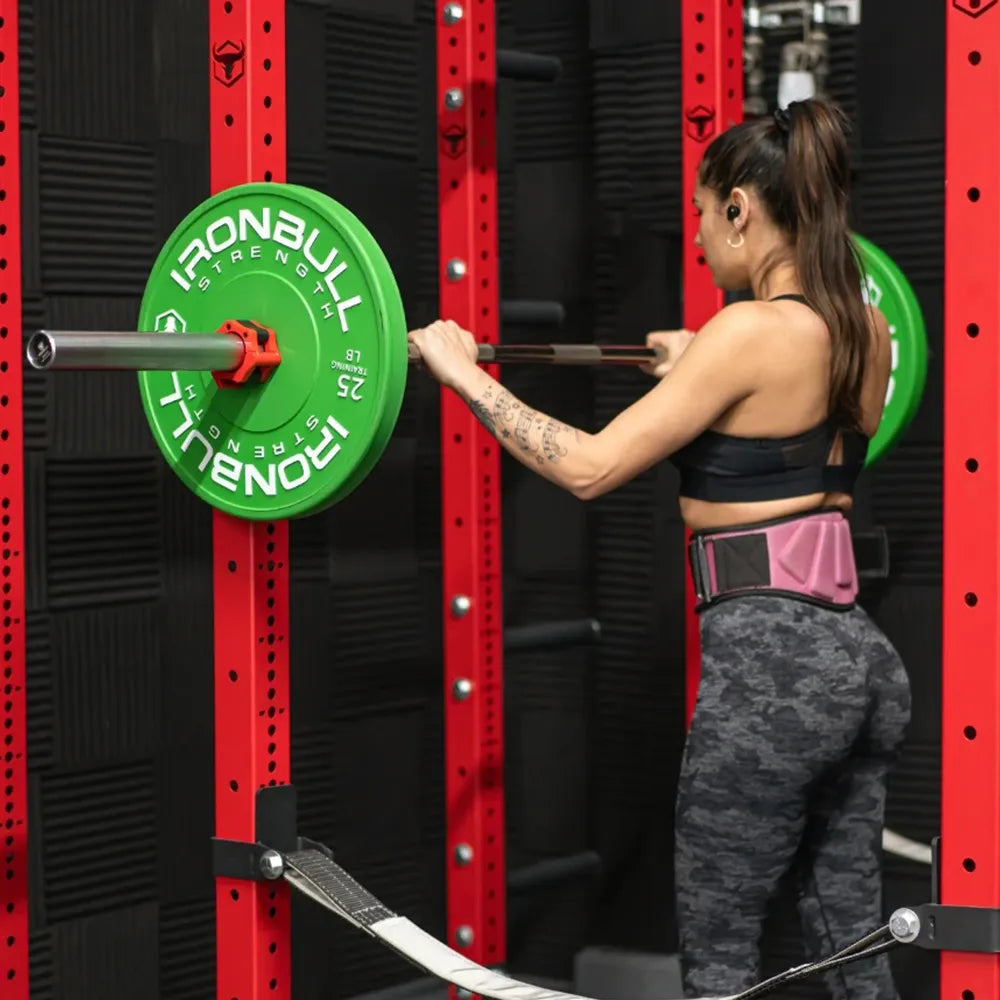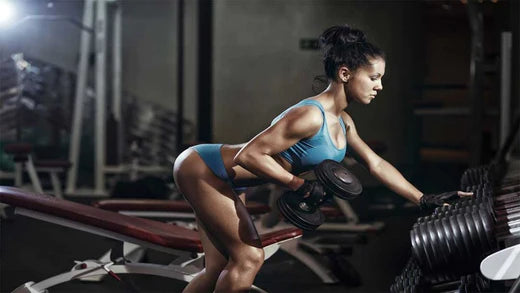10 exercices puissants pour les quadriceps à la maison pour des jambes sculptées


Vous cherchez à développer des quadriceps forts et définis sans quitter le confort de votre maison ?
Vous avez de la chance ! Ce guide complet vous présente 10 exercices efficaces pour les quadriceps, à réaliser chez vous, sans abonnement à une salle de sport .
Que vous soyez un passionné de fitness ou que vous commenciez tout juste votre parcours de musculation, ces exercices vous aideront à obtenir une définition et une séparation impressionnantes des quadriceps.
Explorons différents entraînements de quadriceps à domicile et découvrons comment transformer vos jambes avec des mouvements simples mais puissants.
1 Squats au poids du corps : la base de la force des quadriceps
Les squats au poids du corps sont la pierre angulaire de tout entraînement efficace des quadriceps. Ils sollicitent plusieurs groupes musculaires, en particulier les quadriceps. Voici comment les réaliser correctement :
- Tenez-vous debout, les pieds écartés à la largeur des épaules
- Abaissez votre corps comme si vous vous asseyiez sur une chaise
- Gardez votre poitrine haute et votre tronc engagé
- Poussez sur vos talons pour revenir à la position de départ
Essayez de faire 3 séries de 15 à 20 répétitions pour commencer, en augmentant à mesure que vous développez votre force.
2 fentes : un exercice d'isolation des quadriceps pour l'équilibre et la force
Les fentes sont excellentes pour cibler les quadriceps tout en améliorant l'équilibre et la stabilité. Suivez ces étapes :
- Avancer d'un pied
- Abaissez votre corps jusqu'à ce que les deux genoux soient pliés à un angle de 90 degrés
- Repousser vers la position de départ
- Alternez les jambes à chaque répétition
Effectuez 3 séries de 10 à 12 répétitions par jambe.
3 Step-ups : Développer la force des quadriceps inférieurs
Les step-ups sont un excellent moyen d'isoler les quadriceps, en particulier la partie inférieure. Voici comment les réaliser :
- Tenez-vous devant une marche ou une plate-forme solide
- Montez sur la plate-forme avec un pied
- Poussez votre autre pied vers le haut pour rencontrer le premier
- Reculez et répétez
Commencez par 3 séries de 12 à 15 répétitions par jambe.
4 Wall sits : Le brûleur quadruple ultime
Les wall sits sont un exercice isométrique qui sollicitera vos quadriceps. Voici la technique :
- Appuyez-vous contre un mur, les pieds écartés à la largeur des épaules
- Glissez vers le bas jusqu'à ce que vos cuisses soient parallèles au sol
- Maintenez cette position aussi longtemps que possible
Essayez de faire 3 séries, en maintenant la position pendant 30 à 60 secondes à chaque fois.
5 squats sur une jambe : un exercice d'isolation des quadriceps exigeant
Les squats sur une jambe, également appelés squats pistolet, sont un mouvement avancé qui testera vraiment la force et la stabilité de vos quadriceps :
- Tenez-vous debout sur une jambe avec l'autre étendue devant vous
- Abaissez votre corps aussi loin que possible tout en maintenant l'équilibre
- Remontez jusqu'à la position de départ
Commencez par 3 séries de 5 à 8 répétitions par jambe, en utilisant un support si nécessaire.
6 Jump squats : puissance explosive pour la définition des quadriceps
Les squats sautés ajoutent un élément pliométrique à votre entraînement, aidant à développer la puissance explosive et la définition des quadriceps :
- Commencez en position accroupie
- Sautez de manière explosive en levant les bras au-dessus de votre tête
- Revenez doucement en position accroupie
Effectuez 3 séries de 10 à 15 répétitions.
7 squats bulgares : une alternative à l'extension des quadriceps
Les squats bulgares sont une excellente alternative à l'extension des quadriceps qui fait également travailler vos fessiers et vos ischio-jambiers :
- Tenez-vous à quelques mètres devant un banc ou une chaise
- Placez le dessus d'un pied sur le banc derrière vous
- Abaissez votre corps jusqu'à ce que votre genou arrière touche presque le sol
- Remontez jusqu'à la position de départ
Faites 3 séries de 10 à 12 répétitions par jambe.
8 squats Sissy : cibler la séparation des quadriceps
Les squats Sissy sont un exercice intense qui isole vraiment vos quadriceps et aide à obtenir cette séparation des quadriceps tant convoitée :
- Tenez-vous debout, les pieds écartés à la largeur des hanches, en vous tenant à un support
- Penchez-vous légèrement en arrière et montez sur la pointe des pieds
- Pliez vos genoux et abaissez votre corps en gardant vos hanches étendues
- Remontez jusqu'à la position de départ
Commencez par 3 séries de 8 à 10 répétitions, en progressant au fur et à mesure que vous développez votre force.
9 Box jumps : Développer la puissance des quadriceps inférieurs
Les sauts en boîte sont un autre exercice pliométrique qui cible vos quadriceps inférieurs tout en améliorant la puissance explosive :
- Placez-vous devant une boîte ou une plate-forme solide
- Sautez sur la boîte et atterrissez doucement avec les genoux pliés
- Reculez et répétez
Commencez par 3 séries de 8 à 10 répétitions, en utilisant une boîte plus basse si nécessaire.
10 extensions de jambes avec bande de résistance : Isolation des quadriceps à la maison
Les extensions de jambes avec bande de résistance sont un excellent moyen d'isoler vos quadriceps sans équipement de gym :
- Asseyez-vous sur une chaise avec une bande de résistance enroulée autour de votre cheville et du pied de la chaise
- Étendez votre jambe en poussant contre la résistance de la bande
- Revenez lentement à la position de départ
Effectuez 3 séries de 12 à 15 répétitions par jambe.
Comprendre la fréquence et la récupération des exercices du quadriceps
De nombreux amateurs de fitness se demandent à quelle fréquence ils doivent solliciter leurs quadriceps pour obtenir des résultats optimaux. La clé est de trouver le juste équilibre entre stimulation et récupération.
Essayez d'intégrer des exercices pour les quadriceps à votre routine 2 à 3 fois par semaine , en prévoyant au moins un jour de repos entre les séances. Cette fréquence stimule suffisamment la croissance musculaire tout en laissant à votre corps le temps de se réparer et de se renforcer.
N'oubliez pas que les muscles se développent pendant la récupération, et non pendant l'entraînement lui-même. Le surentraînement peut entraîner fatigue, baisse de performance et même blessures. Soyez donc à l'écoute de votre corps et adaptez-vous si nécessaire.
Développer ses quadriceps sans poids : mythe ou réalité ?
Vous pourriez être surpris d’apprendre que développer des muscles quadriceps impressionnants ne nécessite pas nécessairement une salle de sport complète avec du matériel.
Les exercices au poids du corps comme les squats, les fentes et les jump squats peuvent efficacement développer les quadriceps, surtout s'ils sont pratiqués régulièrement et avec une technique appropriée. La clé est la surcharge progressive : augmenter progressivement la difficulté des entraînements au fil du temps.
Vous pouvez y parvenir en augmentant les répétitions, en variant le rythme ou en intégrant des exercices de musculation plus exigeants. À mesure que vous progressez, vous pouvez envisager d'ajouter des bandes de résistance ou un gilet lesté pour solliciter davantage vos muscles .
La chronologie de la définition du quad visible
L'une des questions les plus fréquentes en fitness est le temps nécessaire pour obtenir des résultats. Pour la définition des quadriceps, le délai peut varier en fonction de facteurs tels que l'alimentation, la régularité, la génétique et le point de départ.
Cependant, avec un exercice régulier et une alimentation adéquate, vous pourrez commencer à remarquer des améliorations dans la définition des quadriceps en 4 à 8 semaines.
Gardez à l'esprit que la définition musculaire visible dépend également du pourcentage de masse grasse. Combiner vos exercices pour les quadriceps avec une alimentation équilibrée et une stratégie globale de perte de graisse vous aidera à révéler la masse musculaire que vous développez.
Adaptation des exercices de quadriceps pour les débutants
Si vous débutez dans le fitness ou si vous reprenez après une pause, vous vous demandez peut-être si ces exercices pour les quadriceps conviennent aux débutants.
La bonne nouvelle, c'est que la plupart de ces exercices peuvent être adaptés à différents niveaux de forme physique. Commencez par des versions au poids du corps et concentrez-vous sur la maîtrise de la technique avant de passer à des variantes plus exigeantes.
Par exemple, vous pouvez commencer par des squats assistés, en vous tenant à une chaise solide pour garder l'équilibre, avant de passer aux squats libres. À mesure que vous gagnez en force et en confiance, vous pouvez augmenter progressivement la difficulté de vos exercices.
Prévenir les douleurs au genou lors des exercices de quadriceps
La douleur au genou peut être une source de préoccupation lors de l’exécution d’exercices pour les quadriceps, mais vous pouvez prendre certaines mesures pour protéger vos articulations.
Avant tout, assurez-vous d'avoir une bonne posture dans tous vos exercices. Cela signifie maintenir l'alignement entre vos genoux et vos orteils, éviter de les laisser s'affaisser et ne pas les laisser dépasser vos orteils lors d'exercices comme les squats.
Échauffez -vous soigneusement avant votre séance d'entraînement pour augmenter votre circulation sanguine et préparer vos articulations au mouvement . Augmentez progressivement l'intensité et le volume de vos exercices.
Si vous ressentez une douleur persistante au genou, il est important de consulter un professionnel de la santé ou un coach sportif pour obtenir des conseils personnalisés. Si la gêne est légère, vous pouvez toujours opter pour une paire de genouillères pour une meilleure protection et des performances accrues.
La science du développement musculaire et de l'hypertrophie
Comprendre les mécanismes scientifiques de la croissance musculaire peut vous aider à optimiser vos efforts de renforcement musculaire. L'hypertrophie musculaire, ou augmentation de la taille des muscles, se produit lorsque les fibres musculaires sont endommagées pendant l'exercice, puis se réparent et se renforcent.
Ce processus est stimulé par la tension mécanique (la force exercée sur le muscle), le stress métabolique (l’accumulation de métabolites pendant l’exercice) et les lésions musculaires.
Pour maximiser l’hypertrophie, incorporez un mélange d’ exercices composés (comme les squats) qui permettent de soulever des charges lourdes et d’exercices d’isolation (comme les extensions de jambes) qui ciblent des muscles spécifiques.
Visez une combinaison de levées lourdes (3 à 5 répétitions) pour la force et de plages de répétitions modérées (8 à 12 répétitions) pour l'hypertrophie.
Améliorer votre salle de sport à domicile pour le développement des quadriceps
Au fur et à mesure que vous progressez dans votre parcours de remise en forme , pensez à ajouter des équipements pour stimuler davantage vos muscles.
Un rack à squat peut être un atout précieux pour votre salle de sport à domicile, vous permettant d'effectuer en toute sécurité des squats lourds et d'autres exercices composés . Associé à un banc de musculation, vous disposerez d'une configuration polyvalente pour divers exercices de jambes.
Les haltères offrent une flexibilité pour les exercices unilatéraux et les squats bulgares. Les barres , ainsi qu'une variété de disques de poids, y compris plaques fractionnaires pour micro-chargement, permettant des augmentations de charge précises.
N'oubliez pas le confort et la sécurité : un bon coussin de squat peut rendre les exercices avec haltères plus confortables sur vos épaules.
Avec cet équipement, vous disposerez d'une configuration complète pour construire des quadriceps forts et définis dans le confort de votre maison.
Intégrer ces 10 exercices puissants pour les quadriceps à votre programme d'entraînement à domicile peut vous aider à obtenir une définition et une force impressionnantes. Pour obtenir les meilleurs résultats, privilégiez une bonne technique, une bonne régularité et une surcharge progressive.
Que vous utilisiez simplement le poids de votre corps ou que vous ajoutiez de la résistance avec des bandes ou des poids, ces exercices fournissent une base solide pour construire des jambes sculptées et puissantes.
Restez engagé dans votre parcours de remise en forme et regardez vos quadriceps se transformer en muscles bien définis et accrocheurs qui mettent en valeur votre travail acharné et votre dévouement.

